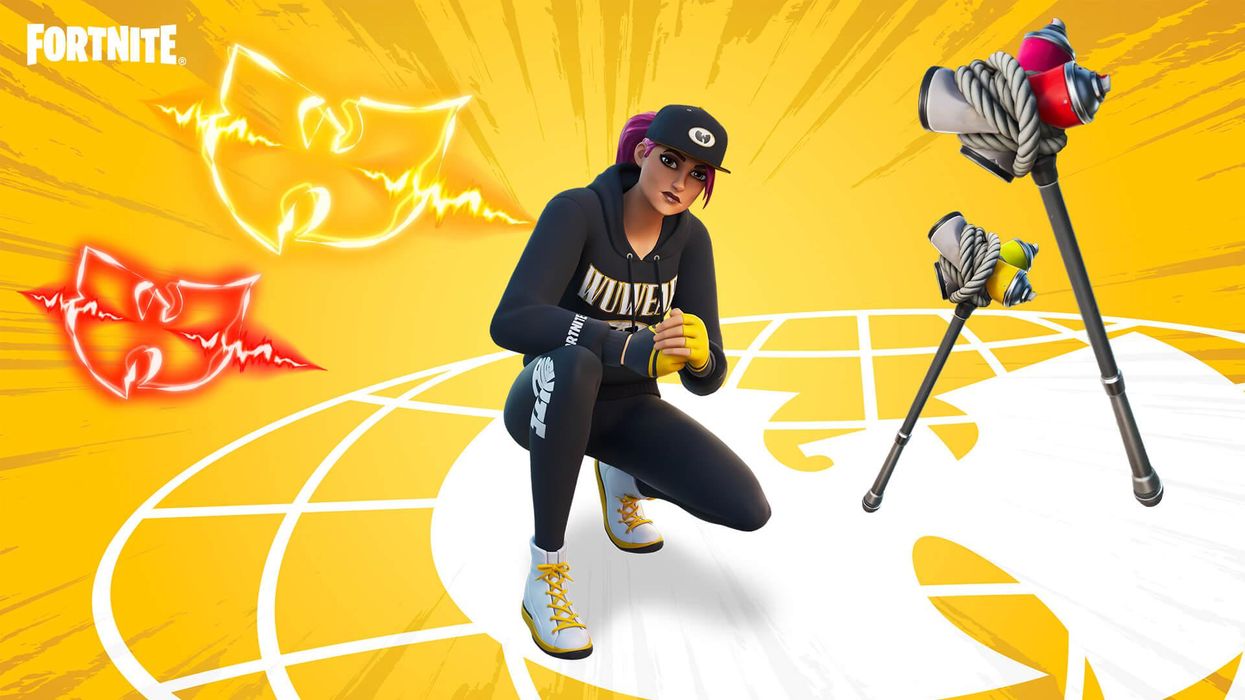Brand News
21 April 2022
Collab of the week: The Wu-Tang Clan is dropping digital gear in Fortnite
It's a look at how physical and digital goods are coming together.

Wu-Wear, now in Fortnitie. (Image courtesy of Epic Games)
It's a look at how physical and digital goods are coming together.

Wu-Wear, now in Fortnitie. (Image courtesy of Epic Games)
The Wu-Tang Clan is coming to Fortnite Island. News of the legendary hip-hop group's entrance into the video game offers an example of what commerce might look like as physical and digital worlds blend.
The details: On April 23 at 8 p.m., the popular battle royale video game Fortnite is set to drop new apparel and accessories from The Wu-Tang Clan in its in-game shop.
First, a little background on Fortnite: The game brings players into a world in which they must gather resources, and be inventive. It also has an economy all its own. Players can upgrade their looks with items from Fortnite’s Item Shop, a virtual marketplace where users use V-Bucks (which they exchanged for real money) to purchase items that style their characters, and their playing experiences. It’s an important part of Fortnite’s model, and a much-loved feature of the game that allows for creativity and customization.

(Image via Epic Games)
The drop on Friday brings the opportunity for a player to customize a game with Wu-Tang style. It is offering items from Wu-Wear, which is the Wu-Tang Clan’s clothing line, but with a distinct Fortnite spin. The digital items available to players include outfits and pickaxes. Players can also add in-game elements, such as emoticons and a loading screen.
With the drop, Fortnite doubles as a place where players can buy IRL goods, as well. Some of the Fortnite x Wu-Tang gear available will be physical versions of the looks that appear in the game.
Why it’s interesting: The drop mixes music, fashion and gaming, showing how a number of creative approaches can come together in a digital space. Making it all function is commerce, albeit of the in-game variety. This is one of a number of splashy recent additions to Fortnite that hint at an evolution of ecommerce as experiences bridge both digital and physical goods. There are opportunities for cross-pollination between physical and digital goods. What started in one medium can be applied in another. Drops and high-profile collaborations are nothing new in the fashion world. With regular collaborations like this one, Fortnite is showing how they can move to the virtual world.

(Image courtesy of Epic Games)
What it shows: When industry leaders urge anyone wanting a glimpse of the metaverse to look no further than kids playing video games, this is an example of what they mean. In creating a new digital world, Fortnite is bringing some of what exists in this one along. The players have a new set of tools to add to it as they go. The availability of goods in real life demonstrates the opportunities that might emerge to style the physical world after the virtual one.
Labor disputes on the West Coast could cause further disruption heading into peak season.
When the first half of 2023 is complete, imports are expected to dip 22% below last year.
That’s according to new data from the Global Port Tracker, which is compiled monthly by the National Retail Federation and Hackett Associates.
The decline has been building over the entire year, as imports dipped in the winter. With the spring, volume started to rebound. In April, the major ports handled 1.78 million Twenty-Foot Equivalent Units. That was an increase of 9.6% from March. Still it was a decline of 21.3% year over year – reflecting the record cargo hauled in over the spike in consumer demand of 2021 and the inventory glut 2022.
In 2023, consumer spending is remaining resilient with in a strong job market, despite the collision of inflation and interest rates. The economy remains different from pre-pandemic days, but shipping volumes are beginning to once again resemble the time before COVID-19.
“Economists and shipping lines increasingly wonder why the decline in container import demand is so much at odds with continuous growth in consumer demand,” said Hackett Associates Founder Ben Hackett, in a statement. “Import container shipments have returned the pre-pandemic levels seen in 2019 and appear likely to stay there for a while.”
Retailers and logistics professionals alike are looking to the second half of the year for a potential upswing. Peak shipping season occurs in the summer, which is in preparation for peak shopping season over the holidays.
Yet disruption could occur on the West Coast if labor issues can’t be settled. This week, ports from Los Angeles to Seattle reported closures and slowdowns as ongoing union disputes boil over, CNBC reported. NRF called on the Biden administration to intervene.
“Cargo volume is lower than last year but retailers are entering the busiest shipping season of the year bringing in holiday merchandise. The last thing retailers and other shippers need is ongoing disruption at the ports,” aid NRF Vice President for Supply Chain and Customs Policy Jonathan Gold said. “If labor and management can’t reach agreement and operate smoothly and efficiently, retailers will have no choice but to continue to take their cargo to East Coast and Gulf Coast gateways. We continue to urge the administration to step in and help the parties reach an agreement and end the disruptions so operations can return to normal. We’ve had enough unavoidable supply chain issues the past two years. This is not the time for one that can be avoided.”